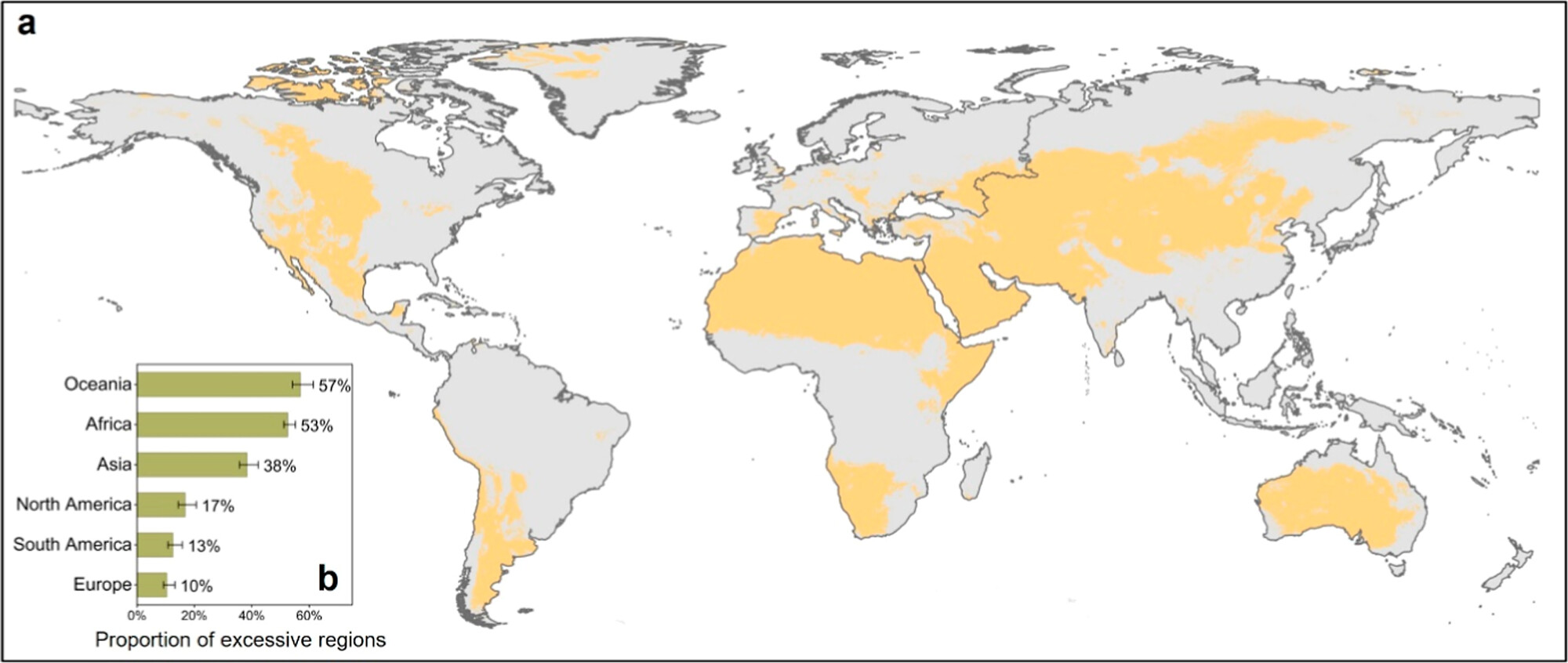HKUST Researchers Introduce World’s First High-Resolution Global Groundwater Sulfate Distribution Map Uncovering Public Health Risks
A recent study by the Hong Kong University of Science and Technology (HKUST) has revealed a startling public health threat: About 17 million people are at risk of gastrointestinal problems due to excessive sulfate levels in groundwater. This alarming finding emerged from the world’s first high-resolution global groundwater sulfate distribution map, launched by the university’s School of Engineering.
While groundwater is a vital source of drinking water for billions of people, the consumption of groundwater with high sulfate concentration can directly cause diarrhea and dehydration, with elevated risks among infants, seniors, and other vulnerable populations. Moreover, sulfate exacerbates arsenic contamination in water and triggers the release of heavy metals from pipeline corrosion, indirectly leading to other health conditions and economic costs. For instance, the United States alone incurs an estimated USD 22 billion annually in corrosion-related costs in water supply systems.
“Unfortunately, sulfate levels in groundwater often go unmonitored. This overlooked yet critical issue has far-reaching implications for public health and water infrastructure,” said Prof. CHEN Guanghao, Chair Professor of the Department of Civil and Environmental Engineering and a co-corresponding author of the present study.
To investigate the scope of the problem, Prof. Chen and his team developed a high-resolution map by employing advanced data-driven methods. After analyzing over 17,000 sulfate concentration measurements alongside global geospatial datasets of variables, they successfully generated a pioneering 1-km resolution map.
As the first of its kind, the map serves as a practical tool for the assessment of water quality. It highlights sulfate excessive hotspots and identifies key contributing factors, which include natural elements such as precipitation patterns and sedimentary geology, as well as human activities like fertilizer application and mining operations.
With the help of this map, the research team established that approximately 194 million people worldwide are exposed to water with sulfate concentrations exceeding 250 mg/L, a threshold recommended by the World Health Organization (WHO). At this level of contamination, people may experience unpleasant taste in water.
Even more alarmingly, an estimated 17 million people face substantial health risks because they live in regions where sulfate concentrations surpass 500 mg/L – levels associated with gastrointestinal issues.
The results have been published in the prestigious journal Environmental Science & Technology, in an article titled “Understanding the Global Distribution of Groundwater Sulfate and Assessing Population at Risk”.
“Our findings have opened up a much-needed global perspective, equipping decision-makers with data to prioritize intervention strategies and safeguard water quality in vulnerable regions,” postdoctoral researcher Dr. ZHANG Zi, another co-corresponding author of the paper, remarked.
The map pinpoints hotspots of sulfate exceedance in regions like South Asia and North Africa, where billions rely on untreated groundwater for drinking. While natural geological conditions dominate as contributors in some areas, anthropogenic factors such as industrial discharge and agricultural practices play a more significant role elsewhere. This variability underscores the importance of region-specific sulfate mitigation strategies.
The first author of this paper, PhD student XIAO Chengyu, pointed out that sulfate contamination not onlythreatens human health, but also has broader environmental consequences.
“High sulfate levels can lead to ecological damage by promoting eutrophication in water bodies, releasing harmful nutrients like phosphorus. With climate change and urbanization intensifying, sulfate exceedance is expected to worsen, further jeopardizing global water quality and availability,” she elaborated.
Conducted in collaboration with Princeton University, City University of Hong Kong, and Beijing Institute of Technology, this study sheds light on the urgent need to incorporate sulfate into global water safety management practices. It provides a critical framework for policymakers, water resource managers, and researchers to design effective and sustainable solutions amid growing environmental and public health challenges.
For media inquiries, please contact:
School of Engineering, HKUST
Celia Lee
Tel: 2358 8982
Email: celialee@ust.hk
Dorothy Yip
Tel: 2358 5917
Email: egkkyip@ust.hk










